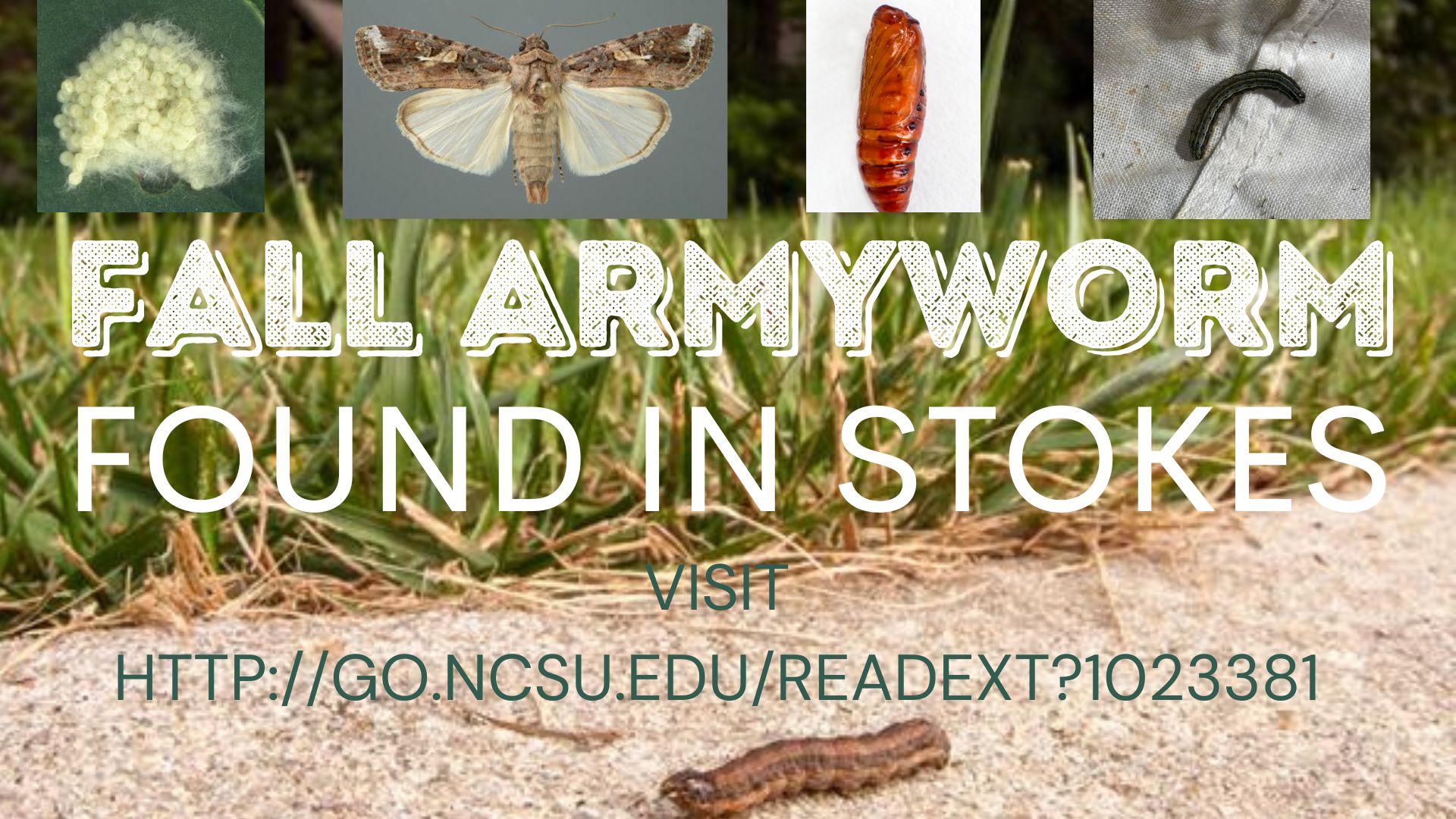Fall Armyworm Reported in Stokes
go.ncsu.edu/readext?1023381
en Español / em Português
El inglés es el idioma de control de esta página. En la medida en que haya algún conflicto entre la traducción al inglés y la traducción, el inglés prevalece.
Al hacer clic en el enlace de traducción se activa un servicio de traducción gratuito para convertir la página al español. Al igual que con cualquier traducción por Internet, la conversión no es sensible al contexto y puede que no traduzca el texto en su significado original. NC State Extension no garantiza la exactitud del texto traducido. Por favor, tenga en cuenta que algunas aplicaciones y/o servicios pueden no funcionar como se espera cuando se traducen.
Português
Inglês é o idioma de controle desta página. Na medida que haja algum conflito entre o texto original em Inglês e a tradução, o Inglês prevalece.
Ao clicar no link de tradução, um serviço gratuito de tradução será ativado para converter a página para o Português. Como em qualquer tradução pela internet, a conversão não é sensivel ao contexto e pode não ocorrer a tradução para o significado orginal. O serviço de Extensão da Carolina do Norte (NC State Extension) não garante a exatidão do texto traduzido. Por favor, observe que algumas funções ou serviços podem não funcionar como esperado após a tradução.
English
English is the controlling language of this page. To the extent there is any conflict between the English text and the translation, English controls.
Clicking on the translation link activates a free translation service to convert the page to Spanish. As with any Internet translation, the conversion is not context-sensitive and may not translate the text to its original meaning. NC State Extension does not guarantee the accuracy of the translated text. Please note that some applications and/or services may not function as expected when translated.
Collapse ▲The Fall Armyworm has been reported in Stokes County. They can wreak havoc in pastures, hayfields, and lawns overnight. While these brown caterpillars eat most vegetation, they have a penchant for grasses. Due to favorable summer conditions, this lawn munching pest has hit record numbers.
Unfortunately, the window for early control has passed entirely. Due to the significant rainfall in July, they were able to spread mostly undetected. Most of their damage occurs only at the end of their larval stage. Fortunately, by the time most individuals notice them they are almost done feeding and will soon disappear.
The adult moths are able to cover significant distances and arrive from further south. Typically they do not appear in numbers large enough to be problematic.
We can start to see economic impacts pastures and hayfields from these armyworms. The best method of prevention of a fall armyworm infestation is regular scouting. You’ll need to look closely at the ground and ruffle the grass a bit to see the worms. Look for small, striped larvae that can range from light green to black, with a distinct “inverted Y” on their faces. To determine if you’re nearing the threshold for treatment, count the worms within a square foot area. Do this in multiple sites in the field. On average, if there are 3 worms per square foot or more, you need to look at treatment and control options.
There are a few different treatment options. If armyworms are in a hay field, you can harvest the hay before the armyworms take it all out. If you do this, make sure that you have good weather for haymaking, and do it as quickly as possible. If you have reached the threshold and wait a few days, the worms WILL take out your field before you can harvest. If you cannot harvest it, or you have armyworms in your pasture, spraying an insecticide may be necessary. You can find a list of insecticides for pastures and hayfields here. Pay attention to label warnings, and make sure you pay special attention to grazing restrictions on what you spray.
If you have a field that has already been defoliated, spraying is not going to be beneficial. Pastures will need to be reseeded or fertilized at the least in the fall to encourage new growth.*
View the Interactive Armyworm map here.
Learn about armyworms in:
Questions about armyworms in your pasture or hayfield in Stokes County? Contact April Bowman, awbowman@ncsu.edu, or 336-593-8179.
In your lawn or garden? Contact Matt Lenhardt at matt_lenhardt@ncsu.edu, or 336-593-8179.
Or reach out to your County Extension Agent.
*Pastures and Forages section adapted from Fall Armyworms in Lawns and pastures.
**Photo from Brandon Hartman, Rockingham County Livestock and Forages Agent





